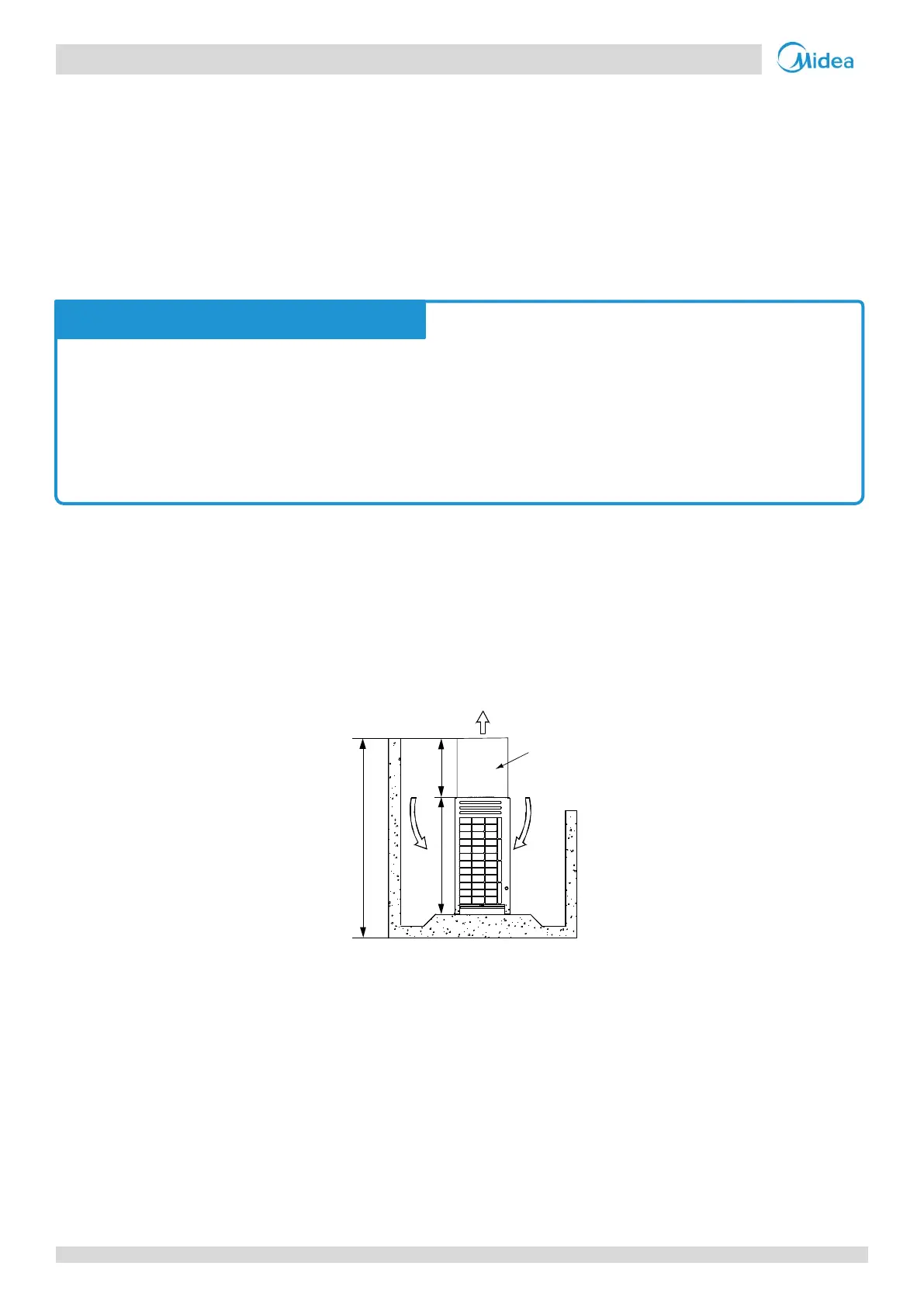VC Pro VRF 50/60Hz
146
Midea VC Pro Series Engineering Data Book
2.2 Indoor Units
2.2.1 Placement considerations
Placement of indoor units should take account of the following considerations:
Sufficient space for drain piping and for access during servicing and maintenance should be allowed.
To ensure a good cooling effect, short-circuit ventilation (where outlet air returns quickly to a unit’s air inlet) should be
avoided.
To prevent excessive noise or vibration during operation, suspension rods or other weight-bearing fixings should
typically be able to bear twice the unit’s weight.
3 Outdoor Unit Ducting and Shielding
3.1 Ducting Requirements
Depending on the height of adjacent walls relative to the height of the units, ducting may be required to ensure proper air
discharge. In the situation depicted in Figure 3-3.1, the vertical section of ducting should be at least H-h high.
Figure 3-3.1: Top of unit below top of adjacent wall
3.2 Design Considerations
Outdoor unit ducting design should take account of the following:
Each duct should contain no more than one bend.
Vibration isolation should be added to the connection between the unit and the ducting to avoid vibration/noise.
Installing louvers is required as doing for safety, they should be installed at an angle no greater than 15° to the
horizontal, to minimize the impact on airflow.
Before installing an indoor unit, check that the model to be installed is as specified in the construction drawings
and confirm the correct orientation of the unit.
Ensure that units are installed at the correct height.
To allow smooth condensate drainage and to ensure unit stability (to prevent excessive noise or vibration), ensure
that units are level to within 1° of the horizontal. If a unit is not level to within 1° of the horizontal, water leakage
or abnormal vibration/noise may occur.
